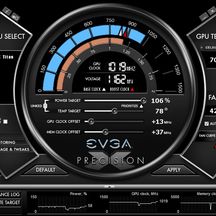
The following lays out the parameters you should take note of. That involves keeping an eye on numerous statistics involving thermal, utilization, power, voltage, and clock speeds for the CPU, GPU, and memory subsystems. RTSS comes with a long list of features and capabilities, but we are primarily interested in the capability to monitor hardware parameters to improve the gaming experience. There’s a lot here, so have a play around and do some customizing! Using RTSS to Monitor Hardware Performance The tab contains a list of hardware parameters relevant to the CPU and GPU. Navigate to the Monitoring tab in the Settings window. Alternatively, you can leave everything unchanged at the default settings and head straight to configuring RTSS by clicking on the Settings button represented by the gear icon.Ĥ. Open MSI Afterburner and dial in the overclock settings for the GPU. It’s not possible to monitor critical hardware parameters without RTSS.ģ. Install the tool and be sure to select RivaTuner Statistics Server when you are prompted to choose components during the installation. Download the latest stable release of MSI Afterburner bundled with RTSS.Ģ.


Here’s what you need to do to get started.Īlso read: Do You Need A 360 Hz Monitor? Ultra-High Refresh Rates Explained Install and Configure RTSSġ. This guide is based around MSI Afterburner, which comes bundled with RTSS.

RivaTuner itself has since been assimilated into virtually all major GPU overclocking tools, such as MSI Afterburner, EVGA Precision X, and ASUS GPU Tweak.


 0 kommentar(er)
0 kommentar(er)
